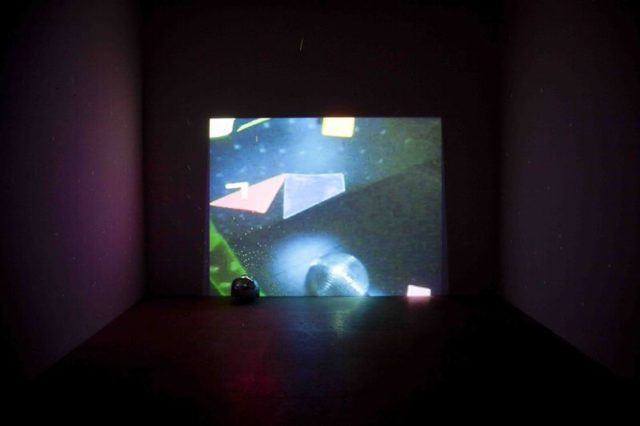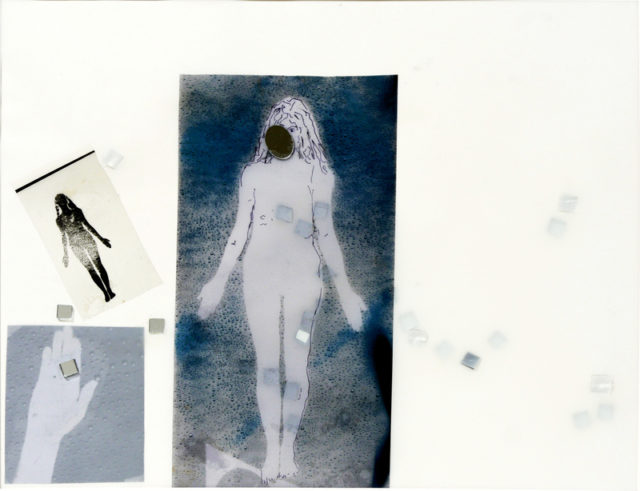I saw Dreamlands at the Whitney on November 9, 2016, after having woken up to a voice on the radio confirming the winner of the US elections. There were a few moments prior to opening my eyes where I hadn’t yet remembered what had happened the night before. (I had left my friend’s apartment drunk and in a leaden silence and taken a wordless uber ride home with strangers, two white women and a Sikh driver.) My alarm now plays fake nature sounds.
I feel that it is important to mention this to provide some context for my reception of the exhibition, which was absolutely colored by the election. Walking through the world felt like walking through some kind of rainbow sludge, where everything was so stimulating as to numb one’s perceptions, the grays of a rainy New York fall day, altogether too bright, painful. The subways were silent. At the time, not quite sure what to do with myself, I thought that going to this exhibition might do me some good, “get my mind off things.”
Of course this would not be a fair standard to hold anything to. Dreamlands, like the many distractions that followed, was not able to transport me.
The show’s full title is Dreamlands: Immersive Cinema and Art 1905 – 2016. This self-conscious linguistic reframing of video installation grated on me. Calling cinema immersive felt redundant, but then maybe I’m old fashioned. I also didn’t quite see the necessity of aligning video installation with cinema, aside from a transparent attempt to make the genre more commercially appealing. (Also, I’m pretty sure I hated everything at that moment.)

The Whitney’s text notes that the show “focuses on the ways in which artists have dismantled and reassembled the conventions of cinema—screen, projection, darkness—to create new experiences of the moving image.” Early reviews praise the show as a “retort” to the shrinking apparatuses of the production and consumption of moving pictures. Is this, I wondered, totally necessary? Is the general audience for this work (presumably your average, educated middle class viewer) so removed from immersive cinematic experiences that institutions like the Whitney need to qualify this experience as “new”, and give critics the impression of a “retort”?
Dreamlands is a reference to H.P. Lovecraft’s “alternate fictional dimension,” a world of dreamed escape. Added to the fact that the show presents itself as “the most technologically complex project mounted in the Whitney’s new building to date,” the entire endeavor feels like a largely unchecked celebration of a technologically-induced disconnect from reality.
In many of the actual works that I encountered, I only felt more acutely how technology had duped yet another population, myself included, into feeling as though they were participating in something bigger, but only ended up isolating us further from reality, perpetuating a dangerous self-congratulatory isolationism that in turn produced a figure like Donald Trump. However, some artists were ahead of the curve in recognizing both the seduction and potential dangers of technological escapism. Lynn Hershman Leeson’s ‘DiNA’ (2004–2006), which was one of the first artworks to use Artificial Intelligence felt eerily prescient of this insularity. The viewer is invited to speak to an artificial woman, whose face is reflected, along with one’s own, in a mirror, and speaks back in an endless loop of technology-induced narcissism.

Ian Cheng’s ‘Baby feat. Ikaria’ (2013) is a similar closed loop, captures three ‘chatbots’ engaging in an endless, simulated conversation. The abstract forms of the bots jabber away adhering only to the internal logic of their world, their pre-programmed parochialism, placing the viewer in the position of an outsider, but to what? The chatter is so radically provincial that it has no import to anyone but the three simulated beings who are using it. Again, not dissimilar to the endlessly generated content produced on social media, which I abandoned the following day out of necessity.
I was excited to be able to see Hito Steyerl’s ‘Factory of the Sun,’ installation in person. The piece, which was originally shown at the 2015 Venice Biennale is a playful video game parody in a futuristic, gridded room. Viewers sit on lawn chairs to watch the projection as ‘players,’ in a historic and linguistic tragi-comedy that encapsulates both the optimism and ominousness of the Internet’s potential as either a generative or exploitative force. “THIS IS REALITY” said the video. Didn’t I know it. The flashing, ambiguous words at the end saying “YOUR TEAM WON” hit me like a pound of bricks. Who is the “your” — what binaries was this simple phrase drawing? This was maybe around the same hour as the #notmypresident hashtag was being cooked up. I looked around and wondered how many people in the room felt as uneasy as I did. This is our world.

Most of the other works felt as though they were hitting necessary notes for an exhibition of this scope. Anthony McCall’s “Line Describing a Cone,” and Trisha Baga’s “Flatlands,” brought a refreshing matter-of-factness to an inquiry of perception, light and space. Frances Bodomo’s “Afronauts” and Aidan Koch’s “Light Drifting Up a Wall,” played with the passage of time and narrativity in different ways, each with its own bittersweet poeticism. Dora Budor’s “Adaptation of an Instrument” and Ivana Bašić’s “SOMA 2013” brought in necessary and intelligent sculptural interventions, implicating the body, and a sensation of disembodiment through technology and real and imagined inhabitation of space. Yet, as a whole, and within the exhibition framework, I could not help but feel the show was generally well-rounded and well-behaved (translation: market-driven, complacent). If I learned anything from this exhibition it is that these half-baked narratives – by curators, institutions, and politicians and corporations alike – really don’t hold up when shit hits the proverbial fan. We deserve better.













